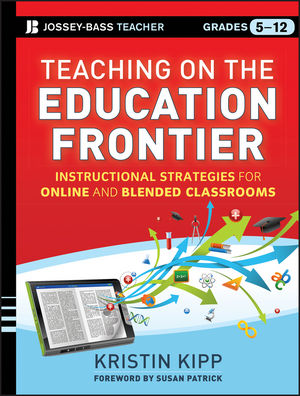Today I came across an edition of Educational Leadership from February 2019 focused on “The Tech-Savvy School.” In some ways, exploring the issue is like looking a time capsule from pre-2020.
The edition is filled with titles like “Creating a Shared Vision,” “New Realities,” and “Teaching Our Way to Digital Equity.” The article titled “In Tech Rollouts, Don’t Forget the Teachers” gave me pause as so many feel forgotten in 2020. So much has changed this year. 2020 has forced us to move much faster in educational technology integration than we ever thought possible, especially at the K-12 level.
However, hidden in the column on research, was an article focused on Personalizing Learning, With Care. Two of the ideas in that article, rather than seeming dated, speak to me with new urgency in 2020.
First, the article urges schools to “focus on productive use of students’ time.” In our rush to implement digital learning, I worry that we have lost sight of the immense value of student time. We must seek to use student time wisely. Students learning from home do not have unlimited time to sort out technical bugs, scan and submit pdf worksheets/forms, or complete an assignment that requires technical conversions. They also may not benefit from hours on Zoom sessions, watching other students. We have to get smart about focusing on how to use their time wisely. When we can simplify processes, we should. A Google form instead of a pdf is one simple step toward that goal. Another is to ensure that teacher resources are well organized. Using folders and clear labels on work within your LMS, including due dates, can save immense time so that students can focus on learning. I would even suggest doing a screenshare with a student and having them demonstrate how they find the work in your class (a rudimentary version of UX testing). If it takes too long or they don’t intuitively know how to find a file, it’s time to revise the system. Finally, we should consider how we are using asynchronous vs. synchronous learning. There are a lot of options beyond Zoom.
Second, the article urges schools to “maximize teachers’ time.” It says that teachers should be focused primarily on activities that are directly helpful for students, in this case calling out “one-on-one and small-group instruction.” Teachers are doing the best they can in a wild and unruly time in education. Thus, administrators must consider how to maximize their time. If there is the option to create templates, course shells, or other curriculum resources that can save time, that should absolutely be a priority. Collaboration on creating curriculum has to be a norm rather than an exception. We should carry that weight together. Teacher time is most valuable working directly with students. We have to find a way to prioritize that through smart educational technology creation and integration.
It’s ironic that, in a season when we have much more time than usual through fewer commutes and home isolation, we have lost sight of the value of that resource. Time is our most precious commodity. Every educator, at every level, should consider how to structure learning to preserve that time and focus it on learning rather than on distractions.

